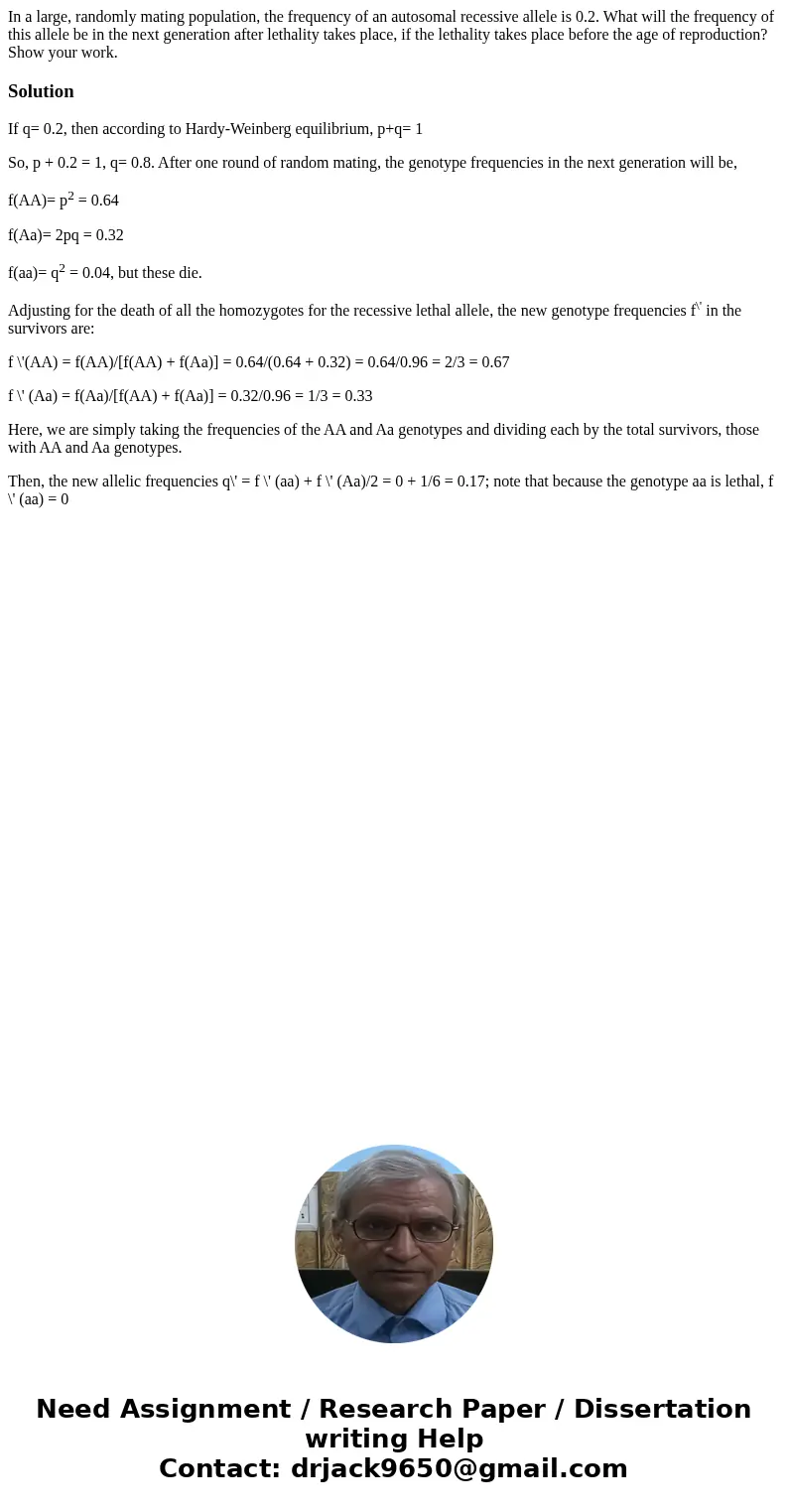In a large randomly mating population the frequency of an au
In a large, randomly mating population, the frequency of an autosomal recessive allele is 0.2. What will the frequency of this allele be in the next generation after lethality takes place, if the lethality takes place before the age of reproduction? Show your work.
Solution
If q= 0.2, then according to Hardy-Weinberg equilibrium, p+q= 1
So, p + 0.2 = 1, q= 0.8. After one round of random mating, the genotype frequencies in the next generation will be,
f(AA)= p2 = 0.64
f(Aa)= 2pq = 0.32
f(aa)= q2 = 0.04, but these die.
Adjusting for the death of all the homozygotes for the recessive lethal allele, the new genotype frequencies f\' in the survivors are:
f \'(AA) = f(AA)/[f(AA) + f(Aa)] = 0.64/(0.64 + 0.32) = 0.64/0.96 = 2/3 = 0.67
f \' (Aa) = f(Aa)/[f(AA) + f(Aa)] = 0.32/0.96 = 1/3 = 0.33
Here, we are simply taking the frequencies of the AA and Aa genotypes and dividing each by the total survivors, those with AA and Aa genotypes.
Then, the new allelic frequencies q\' = f \' (aa) + f \' (Aa)/2 = 0 + 1/6 = 0.17; note that because the genotype aa is lethal, f \' (aa) = 0

 Homework Sourse
Homework Sourse